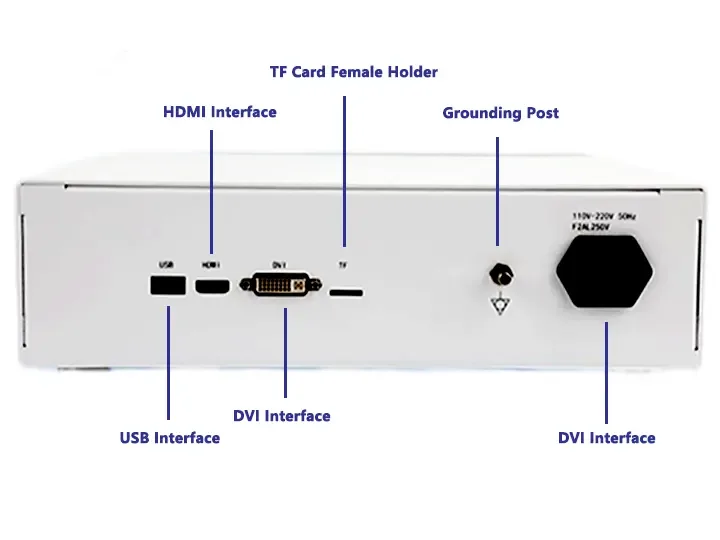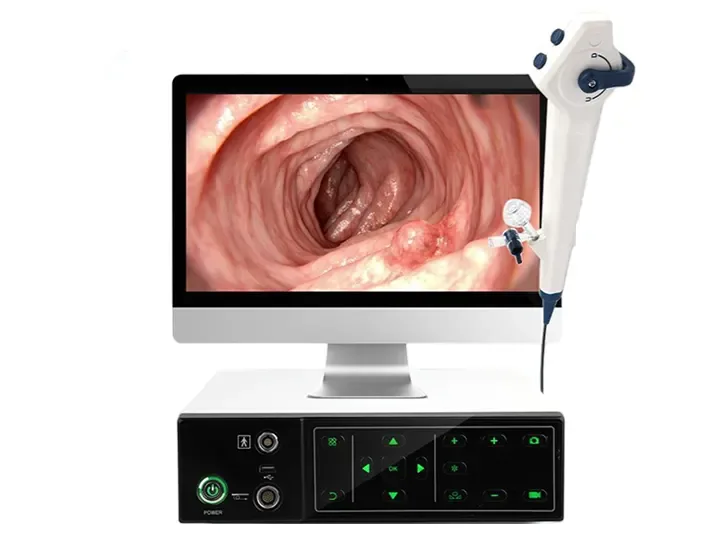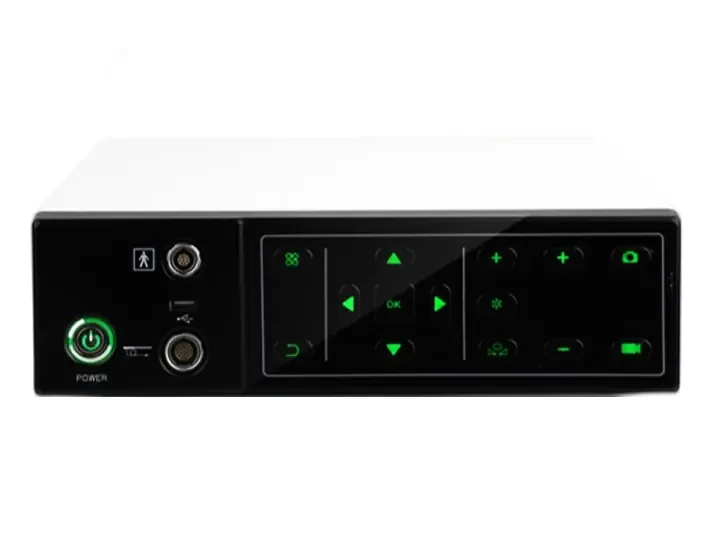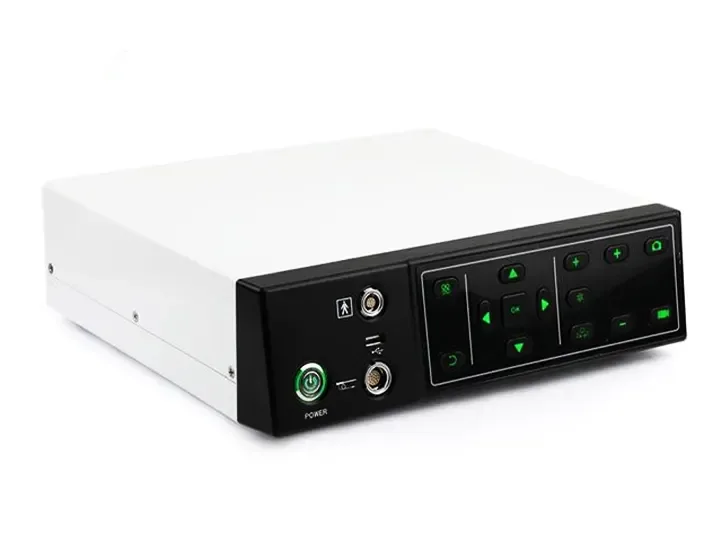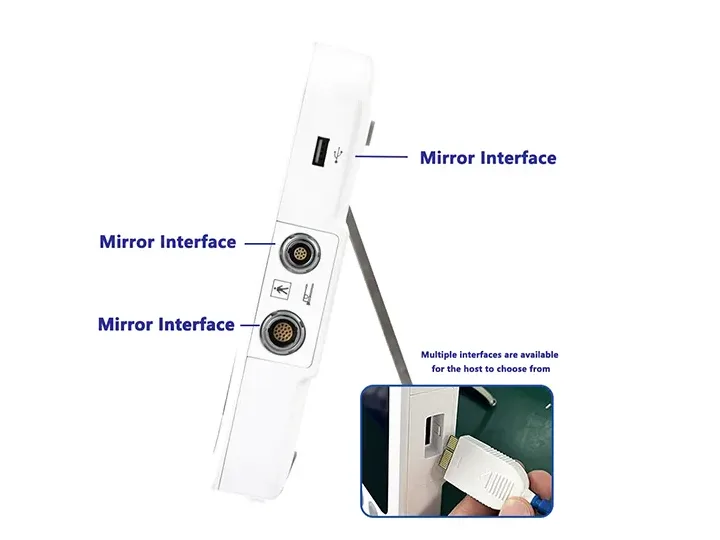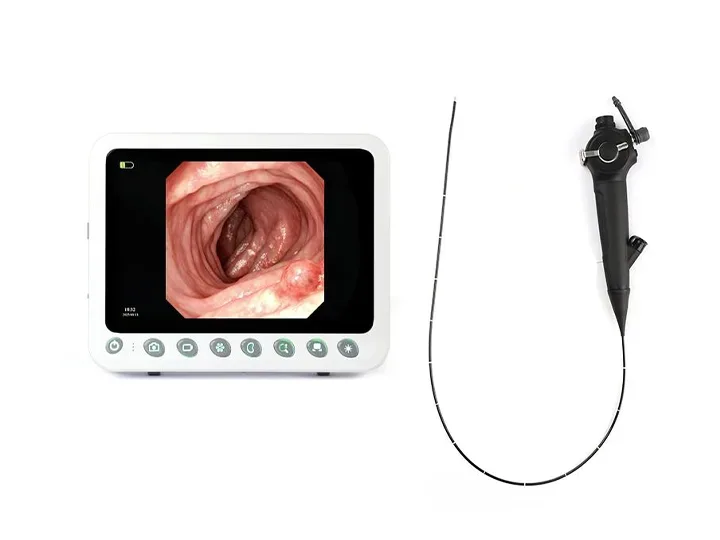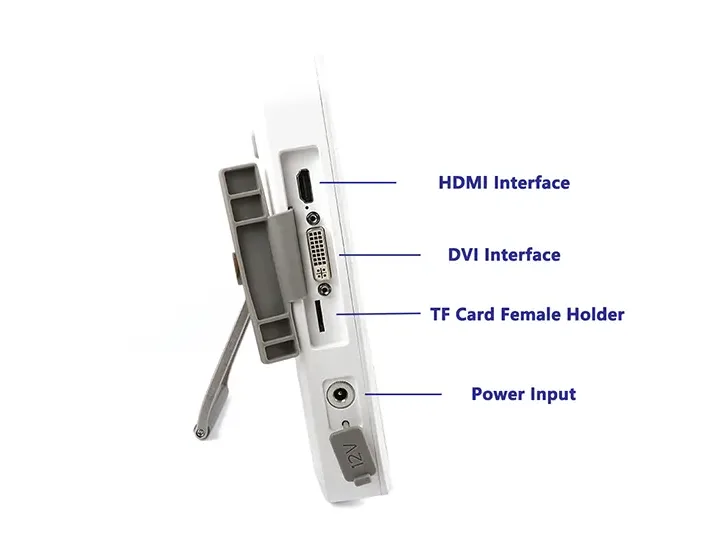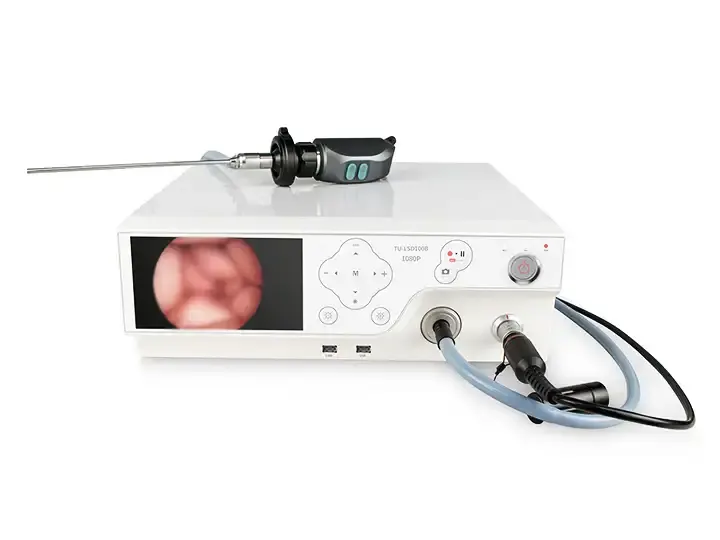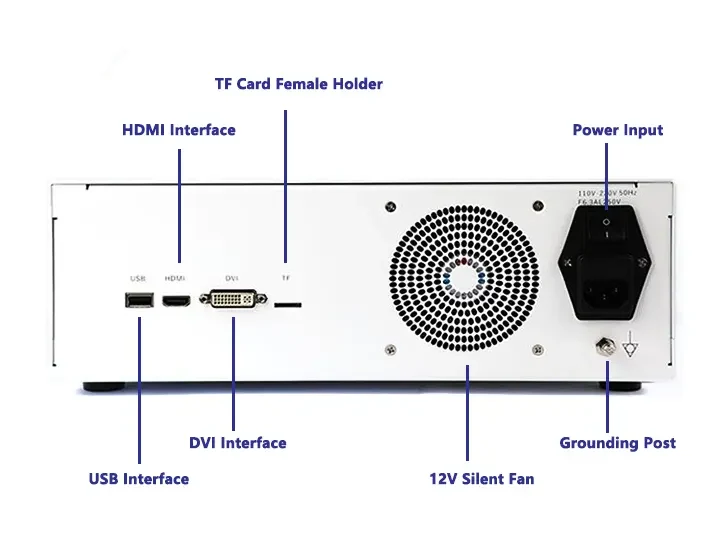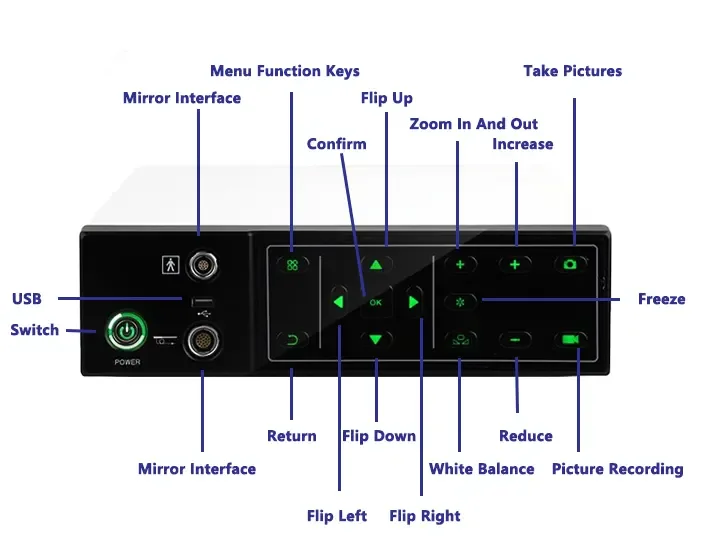Desktop Medical Endoscope Host
This host provides HD imaging for endoscopy medical endoscopes, enhancing visualization during ENT examinations. Designed for clinical efficiency in endoscope medical diagnostics across otolaryngology applications.
Technical Specifications
HD imaging resolution (1920×1200)
Physical control knobs for sterile operation
10.1-inch anti-bacterial touchscreen
HDMI/USB video output interfaces
Desktop form factor with carrying handle
Clinical Applications
Nasal cavity examination: Clear visualization of mucosal surfaces
Laryngeal procedures: Real-time tissue assessment
Diagnostic workflows: Streamlined setup for ENT clinics
Operational Advantages
Stable performance for ENT endoscopy medical endoscopes
Corrosion-resistant shell for frequent disinfection
Ergonomic interface for practitioner use
Optimized for core ENT endoscopic imaging with focus on reliability and clinical efficiency.
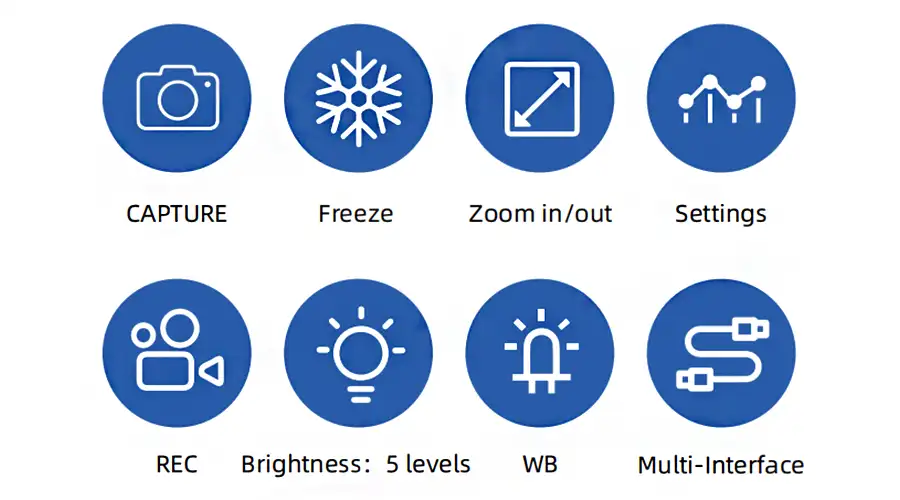
Strong Compatibility
Compatible with Gastrointestinal Endoscopes, Urological Endoscopes, Bronchoscopes, Hysteroscopes,Arthroscopes, Cystoscopes, Laryngoscopes, Choledochoscopes, Strong Compatibility.
Capture
Freeze
Zoom In/Out
Image Settings
REC
Brightness: 5 levels
WB
Multi-Interface
1920*1200 Pixel Resolution Image Clarity
With Detailed Vascular Visualization for Real-Time Diagnosis

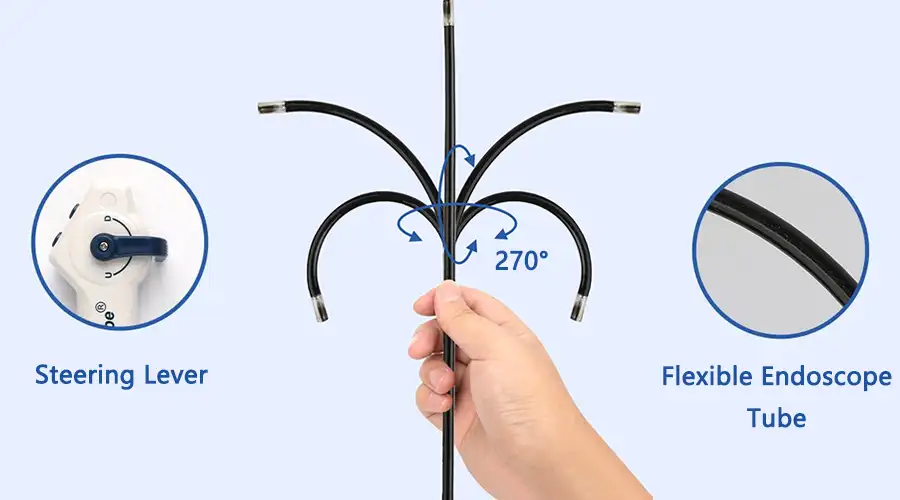
360-Degree Blind Spot-Free Rotation
Flexible 360-degree lateral rotation
Eliminates visual blind spots effectively
Dual LED Lighting
5 adjustable brightness levels, Brightest at Level 5
gradually dimming to OFF
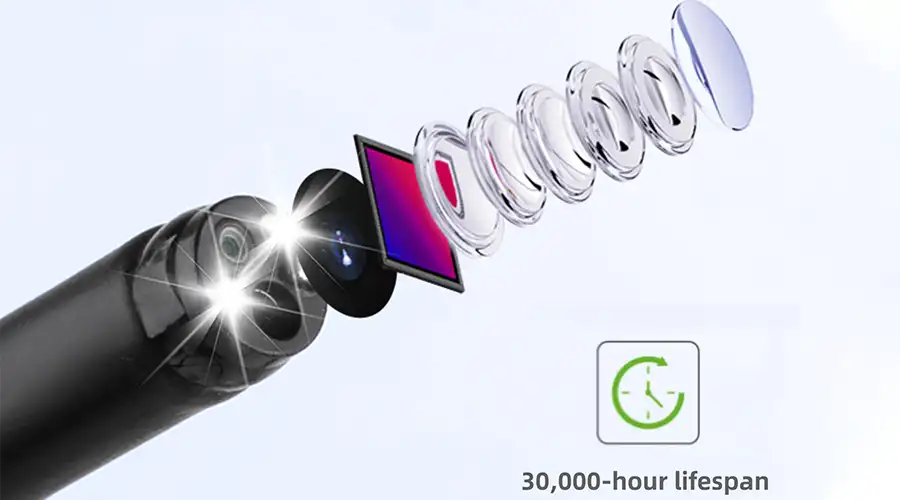
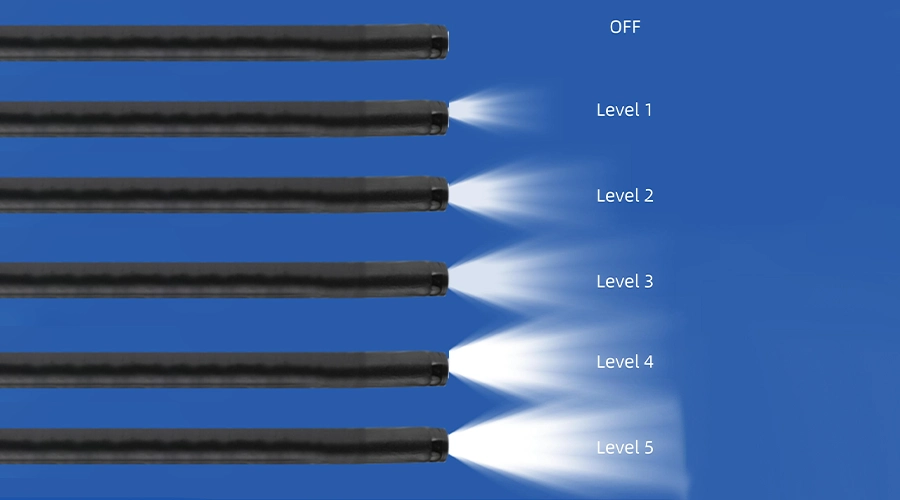
Brightest at Level 5
Brightness: 5 levels
OFF
Level 1
Level 2
Level 6
Level 4
Level 5
Manual 5x Image Magnification
Enhances detail detection for exceptional results

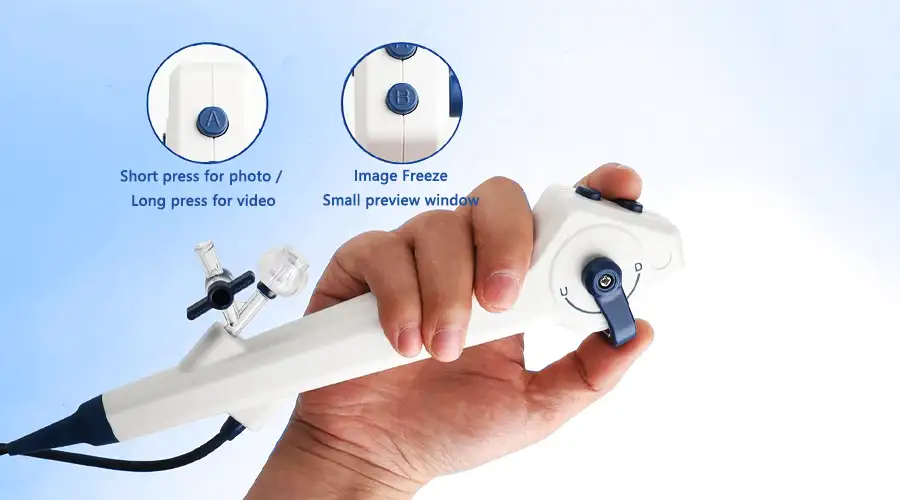
Photo/Video Operation One-touch control
Capture via host unit buttons or
handpiece shutter control
IP67-Rated High-definition waterproof lens
Sealed with special materials
for water, oil, and corrosion resistance

The multifunctional desktop medical endoscope host is a core device that integrates image processing, light source control, data management and other functions, supporting the clinical application of multiple endoscopes such as hard endoscopes, soft endoscopes, and electronic endoscopes. The following is a system analysis from three aspects: principle, advantages and functions:
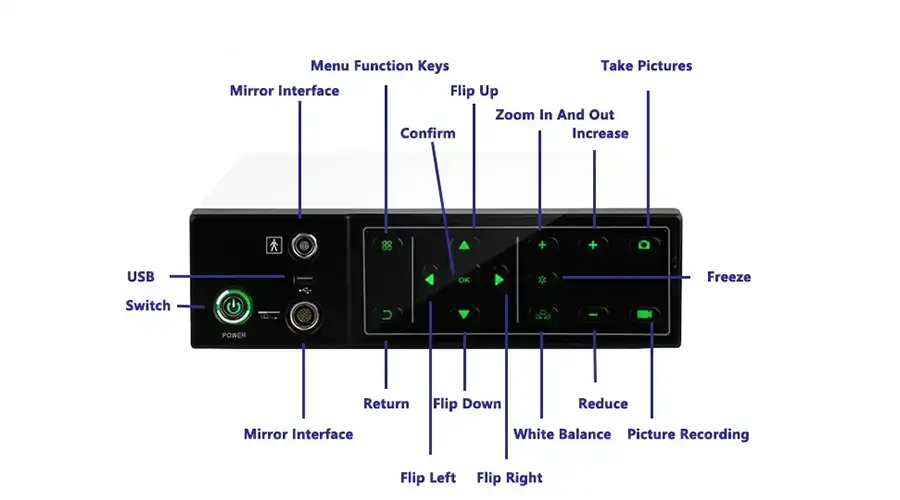
1. Working principle
Modular architecture design
Image processing module: equipped with FPGA or ASIC chip (such as Xilinx UltraScale+), supports 4K/8K video real-time processing (delay <50ms), and is compatible with DICOM 3.0 standard.
Light source control module: adopts intelligent feedback adjustment technology, output brightness range 50,000~200,000 lux, color temperature adjustable (3000K~6500K), and adapts to multiple modes such as white light/NBI/IR.
Data interaction module: built-in Gigabit Ethernet/USB 3.2 Gen2×2 interface, transmission rate up to 20Gbps, supports direct connection to PACS system.
Multimodal imaging technology
Spectral fusion: RGB+near-infrared (such as 850nm) multi-channel synchronous acquisition is achieved through a beam splitter to enhance tumor boundary recognition (sensitivity increased by 40%).
Dynamic noise reduction: Based on deep learning algorithms (such as TensorRT acceleration), the signal-to-noise ratio (SNR) is >36dB under low illumination.
Energy and heat dissipation management
High-efficiency switching power supply (conversion efficiency >90%), with liquid cooling system, ensures continuous operation for 12 hours with a temperature rise of <15°C.
2. Core advantages
Integrated integration
A single host replaces traditional split equipment (such as light source machine, camera system, pneumoperitoneum machine), saving 60% of operating room space and reducing wiring complexity by 80%.
Cross-platform compatibility
Supports multi-brand scopes such as Olympus, Storz, Fuji (adapted through LEMO/SMP interface), and the conversion time is <30 seconds.
Intelligent auxiliary function
AI real-time annotation: automatic identification of polyps (such as CADe system, with an accuracy of 98%), bleeding points, and marking of lesion range (error <0.5mm).
Surgical navigation: integration of preoperative CT/MRI data to achieve AR overlay navigation (such as Proximie system).
Cost-effectiveness
The equipment procurement cost is 25% lower than that of the split solution, and the maintenance cycle is extended to 5,000 hours (3,000 hours for traditional equipment).
III. Clinical application effect
Improve diagnostic efficiency
One-click switching of NBI/fluorescence mode, the detection rate of early esophageal cancer increased from 65% to 92% (data from the National Cancer Center of Japan).
Optimize surgical process
Integrate energy platform (such as high-frequency electric knife, ultrasonic knife) control to reduce intraoperative equipment switching time by 70%.
Telemedicine support
5G+edge computing realizes 4K live broadcast (bit rate H.265 50Mbps), and experts can remotely guide grassroots hospital operations.
Research and teaching
Built-in case database (supports 1000+ hours of video storage), with VR playback function, for physician training.
IV. Technological frontiers and challenges
Innovation direction
Quantum dot imaging: CdSe/ZnS quantum dot coating improves CMOS photosensitivity by 300%, suitable for low-dose fluorescence imaging.
Holographic projection: Optical waveguide technology realizes naked-eye 3D surgical field of view (such as Magic Leap 2 application).
Existing challenges
Data security: Need to comply with GDPR/HIPAA standards, encryption chips (such as Intel SGX) increase hardware costs by 15%.
Lack of standardization: Interface protocols of various manufacturers are not unified, and IEEE 11073 standard is still in progress.
V. Comparison of Typical Products
Brand/Model Resolution Features Price Range
Storz IMAGE1 S 4K HDR Intelligent Light Control (D-Light P) $50,000~80k
Olympus EVIS X1 8K Dual-channel AI Analysis $100k+
Domestic Mindray MVS-900 4K Domestic FPGA+5G Module $30k~50k
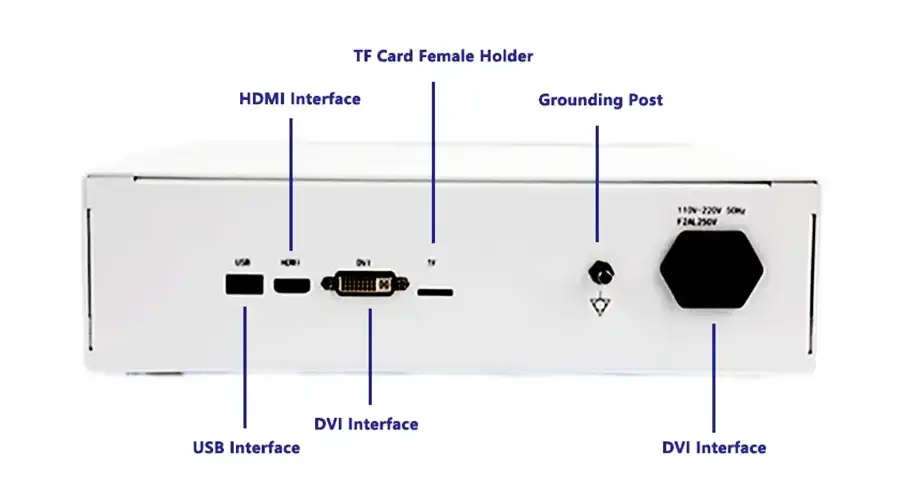
Summary
The multifunctional desktop endoscope host has become the "nerve center" of modern minimally invasive surgery centers through high integration and intelligence. Its technological evolution is moving towards cross-modal fusion (such as OCT+ultrasound), cloud collaboration (edge computing+remote surgery), and consumables management (modular replacement). It is expected to have a compound growth rate of 12.3% in the next five years (Grand View Research data). When choosing, it is necessary to balance clinical needs (such as gynecology/gastroenterology dedicated mode) and long-term scalability (such as AI algorithm OTA upgrade capability).
Faq
-
What are the main clinical applications of desktop medical endoscope hosts?
Desktop medical endoscope hosts are widely used in fields such as gastroenterology (gastroscopy, colonoscopy), respiratory (bronchoscopy), urology (cystoscopy), gynecology (hysteroscopy), and surgical procedures (laparoscopy). Its core function is to assist doctors in observing real-time images of internal organs or cavities through high-definition imaging, supporting diagnosis (such as tumor screening, biopsy) and minimally invasive surgical treatment (such as polypectomy, lithotripsy).
-
What technical parameters should be considered when choosing a desktop endoscope host?
The key parameters include: Imaging quality: resolution (such as 4K ultra high definition), light source type (LED/xenon lamp), dynamic noise reduction capability; Compatibility: Does it support multi department mirror access (such as compatibility with brands like Olympus and Fuji); Functionality: Whether there are auxiliary functions such as narrowband imaging (NBI), image freezing, and video playback; Scalability: Does it support DICOM format storage or integration with hospital PACS systems.
-
How to maintain the endoscope mainframe to extend its service life?
1. Daily cleaning: Turn off the power after use, wipe the surface of the host with a sterile cloth to avoid liquid infiltration; 2. Mirror disinfection: Strictly follow the manufacturer's recommended disinfection process (such as low-temperature plasma sterilization) to prevent cross infection; 3. System maintenance: Regularly calibrate light source brightness, check image sensors, and upgrade software; 4. Environmental requirements: Avoid high temperature and humidity, maintain the operating room temperature (20-25 ℃) and humidity (30-70%).
-
How to quickly troubleshoot if there is suddenly no image output from the endoscope host during surgery?
You can check by following these steps: 1. Confirm that the power supply of the host and monitor is normal, and check if the video cable (such as HDMI/SDI) is loose; 2. Replace the spare mirror body for testing to eliminate fiber breakage or camera malfunction; 3. Restart the host, observe if the light source is on, and replace the spare light bulb if necessary; 4. Attempt to restore factory settings or contact the manufacturer for remote diagnosis.
Latest articles
-
How XBX Cystoscope Supplier Ensures Quality and Precision for Hospital Procurement
Discover how the XBX Cystoscope Supplier provides hospitals with high-precision, OEM-ready endoscopy systems built for reliability, safety, and consistent imagi...
-
How XBX Bronchoscope Factory Delivers Reliable OEM Systems
Discover how the XBX Bronchoscope Factory ensures quality and reliability through advanced OEM manufacturing, optical precision, and strict quality control.
-
How XBX Laparoscope Minimizes Surgical Trauma in Abdominal Surgery
Discover how the XBX Laparoscope reduces surgical trauma through precision imaging, minimal incisions, and faster recovery in modern abdominal procedures.
-
How XBX Hysteroscope Detects and Removes Uterine Polyps
Discover how the XBX Hysteroscope enables precise detection and removal of uterine polyps, improving accuracy, safety, and comfort in women’s health care.
-
What Is an XBX Flexible Ureteroscope for Stone Removal?
Learn how the XBX flexible ureteroscope improves access, visibility, and efficiency in ureteral stone management with 4K imaging and ergonomic control.
Recommended products
-
Portable Hysteroscope Machine
The Portable Hysteroscope Machine (Portable Tablet Endoscope Host) delivers HD imaging and portability for hysteroscopy ...
-
4K Medical Endoscope Host
4K Medical Endoscope Host delivers ultra-HD imaging for medical endoscopes, enhancing diagnostic pre
-
Gastrointestinal medical endoscope desktop host
Gastrointestinal medical endoscope desktop host provides 4K imaging for procedures, enhancing diagno
-
multifunctional medical endoscope desktop host
Multifunctional medical endoscope desktop host delivers HD imaging for endoscopy medical endoscopes,

